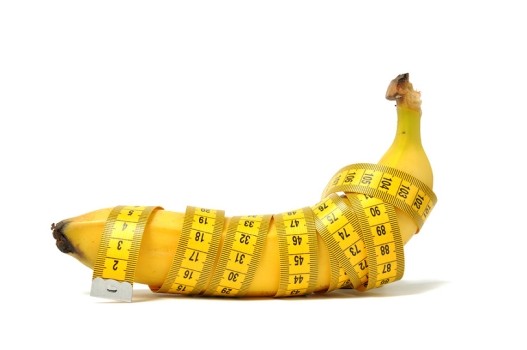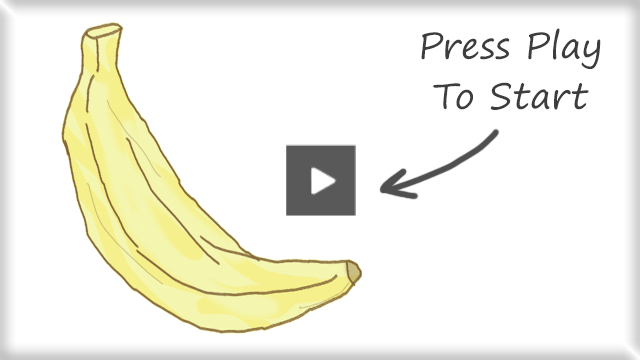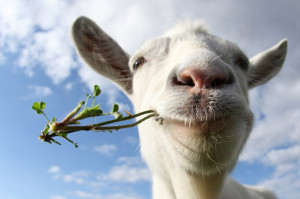Perhaps you are seeking a healthy way to lose weight, and come across an advertisement for just such an opportunity—illustrated by, of all things, a banana. Perhaps you are curious as to why. Since calories have always been the standard gauge of a “diet” food, perhaps you would like to know how many are in a banana. However, when you check online, you may see some conflicting information.
Here are some important key points on banana calories, and on the even more important big picture: banana nutrition.

Why the Differences?
You will find a lot of misleading information on bananas for several reasons. First, anyone can publish a blog or website, and therefore there is a lot of information that’s not backed up by actual facts.
Unqualified “experts” have published myths and nonsense everywhere on the internet- it is hard to find safe, reliable information today. Second, the information that is available is too general. For example, it may state that a large banana has about 130 calories, but what constitutes a large banana and how different is it from a small or medium one?
Here at the Trim Down Club, you will receive banana nutrition information taken straight from the United States Department of Agriculture (USDA) official website. This will not only provide you with the right information, but make it easier to see what you get for these calories.
Banana Nutrition Information
The USDA provides nutrition information on foods based on amounts, including size.
The following is the calorie count for raw bananas:
Extra large (9 inches or longer, 152 grams)……. 135
Large (8-8⅞ inches, 136 grams)…………………… 121
Medium (7-7⅞ inches, 118 grams)………………… 105
Small (6-6⅞ inches, 101 grams)…………………….. 90
Extra small (less than 6 inches, 81 grams)………. 72
Slices (1 cup, 150 grams)…………………………….. 134
Mashed bananas (1 cup, 225 grams)…………….. 200
These amounts are higher than for most other fruits, but the quality of calories you consume is just as important as the total. So how do bananas stack up?
Fruits Can Have Protein?
Yes, fruits can have protein! A medium banana contains 1.3 grams of protein (about 118 grams total weight). In comparison, a single medium egg (44 grams)−considered the protein gold standard−contains more than four times that amount, and 118 grams of egg nearly 10 times.
But what about other popular fruits? A medium orange or peach (about 140 grams) delivers the same amount, nectarines and apricots for the same weight even more; while grapes and plums would yield slightly less, and a medium raw apple or pear with the skin (about 180 grams) only half.
Carbohydrates
A medium banana contains about 27 grams of total carbohydrate, of which just over 3 are contributed by fiber, 14 by sugars, and 6 by starch. This composition is similar to those of the fruits with the exception of starch, which is usually only found in vegetables and especially legumes
This starch−known as “resistant” starch−is believed to be a major reason the banana is good for people with blood sugar and weight concerns. These carbs, combined with proteins and fiber found in bananas, can help to limit the glucose and insulin spikes that plague so many people today.
The resistant starch content is highest in “green” or unripe bananas. These do not have to be inedible to be beneficial! Note that green bananas are enjoyed the world over, and are just as versatile as in their ripe stage.
Other Nutrients
The following is a breakdown of important nutrients appearing in significant amounts in a raw medium banana:
- Magnesium………….. 32 mg……………. ..8% DRI*
- Manganese………….. 32 mg……………. 14%
- Potassium………….. 422 mg……………. ..9%
- Sodium………………….. 1 mg……………. <1%
- Vitamin B6……………. 43 mg……………. 25%
*Dietary Reference Intake (recommended daily intake) for adults over 18 years of age.

Though banana is most famous for its high potassium content, its most impressive essential nutrient is vitamin B6, also known as “pyridoxine.” Banana is the richest plant food source of pyridoxine in the human diet which is very important for promoting nerve function and also for helping to prevent bone and cardio-vascular disease. Some might even consider the banana a superfood!
The Bottom Line on Bananas
Despite the high number of calories compared to many other fruits, none of them are “empty” in a banana. You can budget this nutrition powerhouse into your day with no regrets!
If you want to know more about how bananas can be good for you or why bananas are a superfood, the Trim Down Club has the answers you need. Be sure to check out the rest of our articles here.





Where are the entire group of recipes?
Hi, JeannineCollins. Click on the “Recipes” link in the toolbar at the top of each site page, then scroll to the bottom of the pop-up list and select “View All Recipes.” Here is the direct link: https://www.trimdownclub.com/view-recipes/
Very interesting information ?